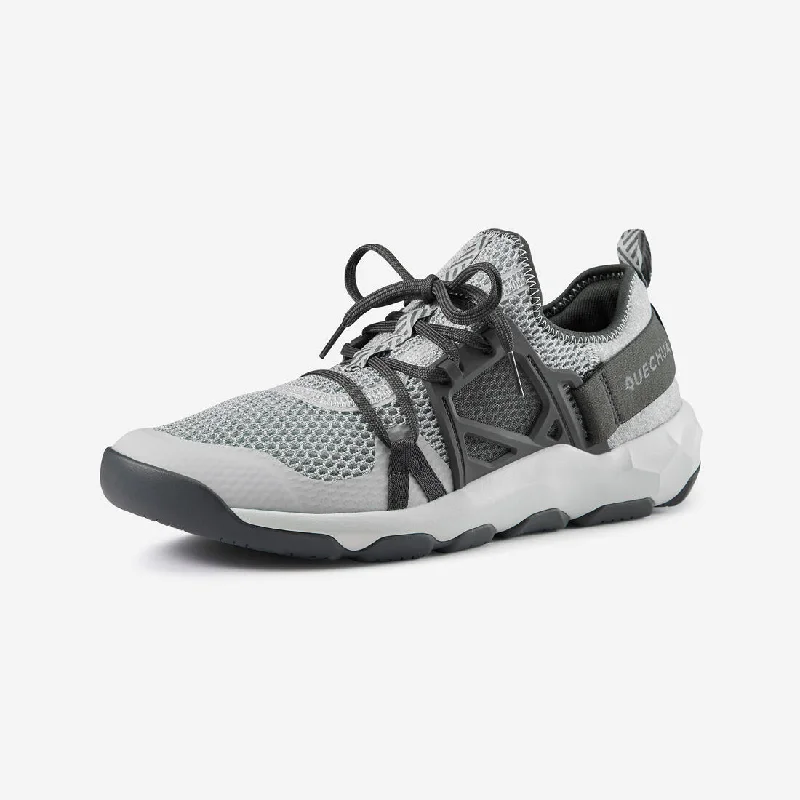If your feet overheat then you'll love these lightweight, ventilated summer hiking shoes.
Grippy soles on natural footpaths
The sole’s design is the result of long research carried out in our labs. It is composed of a specific rubber formula which optimises grip and traction. Because you don't always have the same requirements, we always seek the best compromise to walk on natural paths with loose ground, like forest footpaths for example.
Designed for use on country trails
Our walking shoes are designed for use on off-road trails. Indeed, we choose the components of the sole and upper of our boots and test them to ensure that they are ideally suited to walking on loose trails (e.g. unpaved forest paths) or rocky trails (e.g. rocky coastal paths). Road use (tarmac) may lead to premature wear on your boots and cause discomfort. They are not suitable for mountain walking.
Tested for optimal durability
Laboratory tests were also conducted to test the following elements: tearing eyelets and straps, gluing, toxicology, UV resistance, abrasion resistance of outsole and upper components, accelerated ageing. These tests allow us to improve the quality of our products and prevent premature wear of our hiking shoes.
How to choose the size of my walking boots?
Try on both shoes, standing up, with the socks worn for hiking. Try on several models or sizes if necessary. Check two comfort points:- the heel seating- the front of the foot on a downward slopeAvoid any pressure points when fitting. Feel free to walk around the store. Gradually start using you shoes during your first few hiking trips to break them in.
The shoe/sock combination plays an important role
There are numerous causes of blisters when hiking: chafing, sock creases, humidity, a boot size that’s too small or too big, etc. Therefore, it's important to choose the right shoe size and sock material suited to your hiking shoes.
How to choose the size of my walking socks?
You must choose the right sock size for your foot so that there are no additional creases in the sock: If your socks are too big, there will be too much material around your feet, if your socks are too small, they will get pulled inside the shoe.
How to choose the fabric of my walking socks
You need to manage moisture as best you can when walking: you will sweat, it is often inevitable. If your shoe is breathable, it will wick away moisture from your perspiration. It is therefore necessary to choose a light and breathable sock as well. If your boots are relatively waterproof, you will not make the same choice to protect you from the moisture of the rain: you should prefer socks that will absorb your perspiration and then wick it away from your foot.
What socks should you wear with the NH500 FRESH boot?
We recommend that you choose a pair of socks made of polyamide, without cotton. Polyamide is a fibre that is specially chosen for its capacity to eliminate moisture. So when you sweat, the socks made of polyamide will eliminate any moisture. Then, your shoes will take over the task of wicking away the moisture to the outside thanks to the ventilated mesh. For this, we recommend the Newfeel WS500 Fresh socks.
They’re extra breathable with shock-absorbing midsoles ready to tackle every trail this summer.
If your feet overheat then you’ll love these lightweight ventilated summer hiking shoes.

